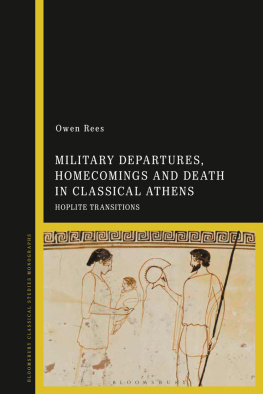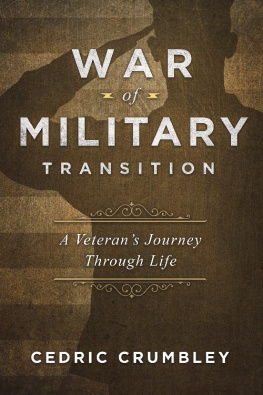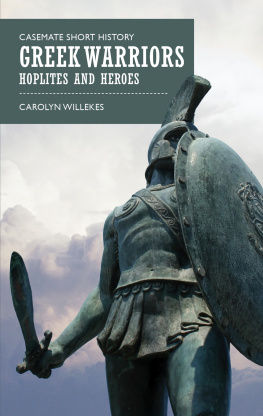The subject of homecoming in the classical Greek world seems, in many ways, hardwired into the disciplines of Classics and Ancient History. For many, one of our first encounters with these disciplines came through the Nostoi stories, most likely that of Odysseus. So, it is of little surprise that the idea of homecoming permeates through the literary studies, nor that ancient historians have become fascinated by the idea of the homecoming Greek warrior. How did he adapt to coming home? How hard did he find it to reconcile his experiences of war with the normality of domestic life? How had war affected him on a personal level?
This interest in homecoming as a literary concept and, in turn, as a psychological experience, has meant that one area has been neglected to date. The process of homecoming itself. While it is, of course, important to understand the warriors experience after his demobilisation, this can only be understood after we have identified how a man transitioned from his domestic life to his military service and then how he transitioned back into his domestic life again. What was the process? What were the basic logistics involved? What rituals and customs took place? Who else shared these experiences with him? And, of course, is there any evidence for how these transitions were perceived by the warrior or by those around him?
Some of the questions asked within this book have never been satisfactorily answered and some seem to have been rarely asked. Yet, it is important to ask them so that we can begin to gauge the experience of transitions between the domestic and military duties. Like all such enquiries, our analysis is guided by insufficient evidence, thus not all these questions can be satisfactorily answered. But, by asking them, we can begin to pick away at our historical preconceptions and start to understand the homecoming transition within a diachronically sensitive framework.
Both viewpoints are strongly focused on the psychology of combat stress and the trauma it may create. Both schools of thought survey the evidence to examine how exposure to combat affected the behaviours of the combatants, how individuals are said to be feeling, whether there is evidence of addiction or depression or any other signifier stated in the American Psychiatric Associations Diagnostic and Statistical Manual of Mental Disorders (the DSM-IV, or DSM-V in its most up-to-date version). They look at the vulnerability, or strength, of the individual based upon their social integrations before and during combat, as a means of analysing whether it is possible for ancient warriors to have suffered trauma.
1.1.1 Universalist approach
Unknown to Shay, his work tapped into a growing field of military history that was exploring the individual experience of military service. This approach was born from the seminal work of John When Shay released his novel interpretation of the Homeric epic poems, he tapped into a growing field of both ancient and military history; but, more than that, he brought a plethora of outside knowledge and experience to allow for a completely new reading of well-trodden ground in classical literature.
Shays first book was quickly picked up and qualified by Lawrence
The work of both scholars has become the lynchpin to the universalist position which has, for the past twenty years, been the most prevalent analysis. In 2011, Aislinn Melchior noted that the view that PTSD was present in the ancient world was fast becoming dogma. More importantly, the universalist model has become influential outside the historical discipline.
Since the end of the First World War, the academic sciences have been interested in finding historical precedents to combat-induced psychological trauma. In September 1919, Dean A
It is not just Epizelus, but ancient history more generally which is so often drawn upon by the psychological sciences. Some scientific papers have tried to explore the ancient sources to offer psychological trauma a lineage and heritage that it is felt to be lacking. This is a natural repercussion of the universalist position.
1.1.2 Relativist approach
However, Melchior never went so far as to dismiss the possibility of PTSD in the ancient world.
Melchiors analysis of the PTSD model influenced Korneel
Thus, by identifying his historical anomaly, Crowley claims to have proven that the soldier is not universal.
Crowleys argument is enticing, not least for its historical relativism via its demand for contextualisation. However, the argument against universalism does not actually disprove the notion that the ancient world witnessed combat trauma. By engaging with the universalist model, Crowley moulds his argument around similar universalist principles. He assumes that the factors behind modern combat trauma would be the factors behind all historical forms of combat trauma. For instance, his engagement with the experience of death is relevant to disprove the universalist position, but he does not consider other factors which may have effected an Athenian more than a modern infantryman. It assumes a seamless transition of ideals between the civic and domestic base in which an Athenian lived and the military service he was duty-bound to perform. However, an Athenian hoplite was not always a warrior, this was a role he entered and exited numerous times during his life.
What Crowleys thesis has revealed is the need to reassess the ancient PTSD model. It successfully brings into question the ability to simply look at the sources and try to identify features of combat trauma. It is now pivotal that any study investigating this theme does so with a diachronically sensitive approach. In addition to this, the flaw in Crowleys own argument highlights a second important factor in the future study of PTSD; the need to evaluate the wider sociological framework which not only produced the hoplite, but in which he also engaged outside his military capacity. To avoid the methodological weaknesses of both sides in this debate it is necessary first to identify a well-established factor in PTSD studies but examine it solely through the social context and ritual rubric of the historical culture.
1.1.3 Military homecomings
The homecoming of soldiers has long been identified as an important post-military risk factor in the study of PTSD. According to numerous studies of veterans from the
The benefit of using homecoming as the primary factor for consideration in this research is its tangible and identifiable nature. A warrior returning home is as much a physical event as it is sociological or psychological. With regard to identifying it within ancient Greek sources, it is neither controversial nor subjective. What is more, the subject of homecoming has begun to appear in the universalist research outside the historical disciplines, making it a timely and important area for consideration. Case in point, research by Kamieski looks to the ancient world while examining the use of pharmacotherapy to help modern veterans with PTSD. As it is one of the only papers to articulate such a bold view so openly, it is necessary to quote it in full:
By instrumentalizing war, the West deprived its homecoming soldiers of a social healing mechanism which over the centuries had helped warriors in their transition back to a civilian life. Traditional societies practiced special
Karen ODonnell has recently aired a similar hypothesis, but there is no suggestion from her referencing that Kamieski was an influence.purification ritual during a warriors homecoming, the very argument that ODonnell is trying to make.
This hypothesis that the ancient Greeks understood war and its effect on individuals and society as a whole is fundamentally based on assumptions. A relativist such as By extension, this institutionalised preparation for war would require neither a process of resocialisation before combat, nor one before homecoming. However, Crowleys thesis is based primarily on sociological influences and neither examines the Athenian processes of going to war, nor returning from it.








